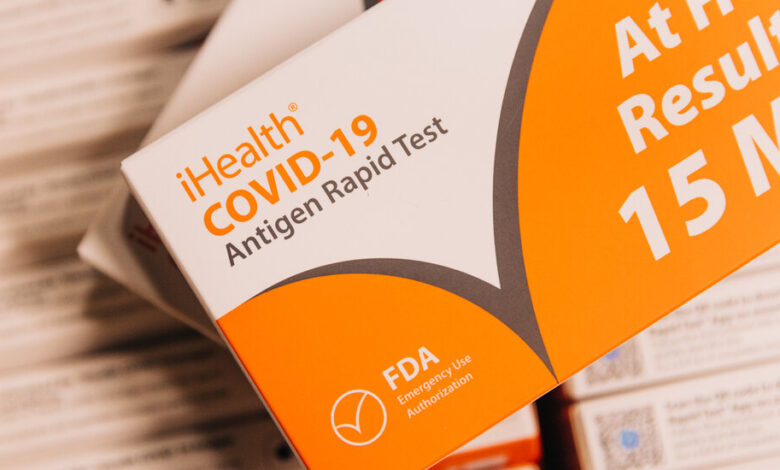How to Make the Most of Your At-Home Covid-19 Test

While Covid has become a regular part of respiratory virus season, community testing centers and drive-through sites where you could determine whether it’s the source of your sniffles have all but vanished.
At-home tests are still a valuable tool to protect yourself and others from the virus, though, and they remain widely available in pharmacies and grocery stores.
Here’s what to know about how these tests work, how to get them and when to take one.
Do rapid tests still work?
Yes. Even with a new variant, JN.1, dominating cases nationwide, rapid tests should be able to accurately capture whether you are contagious. That is because rapid tests detect a protein inside the virus, rather than the spike protein on the surface of the virus that has changed across variants, said Aubree Gordon, an infectious disease epidemiologist at the University of Michigan. Still, there’s a catch: You need to test at the right time.
So when should I test?
Experts recommend testing once you develop symptoms and throughout your illness, if possible. But if you are low on tests, you may want to wait around three to four days after you have developed symptoms. “If it were me and I knew I only had one test, and I became symptomatic this morning, I would not use that test today,” said Dr. Michael Mina, a former Harvard epidemiologist who is now the chief science officer for eMed, a health care technology company that offers Covid testing and virtual care. “I’d use it the day after tomorrow.”
If you’re negative, test again 48 hours later to rule out a false negative. If you were exposed to someone and do not develop symptoms, the Food and Drug Administration recommends waiting five full days to test.
If you’re going to spend time with people who are at high risk for severe Covid, like someone in a nursing home, you should test immediately beforehand, whether or not you have been exposed. It’s best to stay home if you have any symptoms, like a runny nose, sore throat or chills, no matter what the test says.
The tests are expensive. Where can I get more free ones?
Experts acknowledged that it’s harder to get free tests since the Covid-19 public health emergency ended in 2023 and many insurance companies stopped covering the cost. But you can still access them.
You can order up to eight free home tests per household from the federal government through CovidTests.gov. Another option for free tests and treatment is the National Institutes of Health’s Home Test to Treat program, which Dr. Mina is involved with. You may be eligible for free tests through the program if you are uninsured, are considered “underinsured,” are enrolled in Medicaid or Medicare, or if you receive care through the Department of Veterans Affairs or Indian Health Services.
Medicaid and the Children’s Health Insurance Program will cover home tests through September 2024. While Medicare generally doesn’t cover over-the-counter products, if you’re on Medicare and a doctor orders a P.C.R. or rapid test for you, it should not cost you anything. Some Medicare Advantage plans may offer coverage for home tests. You can also use a health savings account or a flexible spending account to pay for them.
Some public health centers make free or low-cost Covid tests available to people who are uninsured or members of underserved communities. And some cities still distribute free Covid tests at schools and public libraries.
Should I used an expired test?
Probably not, because it won’t be as accurate. But make sure your test kit is actually expired. The F.D.A. has a list of tests with extended expiration dates. Search the lot number on your test box to check.
If you use an expired test and “it’s positive, believe it,” Dr. Mina said. But you shouldn’t use a negative result on an expired test to rule out an infection.
I got a positive result. Do I still need to report it?
A positive result means you are infected and probably contagious. You should notify close contacts and isolate yourself to avoid exposing more people. It’s also good practice to report your positive result, which can help public health officials tailor their guidance and allocate resources appropriately. You can do so through the N.I.H. website MakeMyTestCount.org. (Tests performed at a doctor’s office, in a lab or during a telehealth appointment are reported automatically.)
Could my positive result be wrong?
False positives are “pretty rare,” Dr. Gordon said. But if you want some peace of mind, she added, you can test again with a different kit or ask your doctor for a P.C.R. test, which can pick up smaller amounts of virus than a rapid test.
Does the darkness of your Covid test line correspond to how sick you are?
If you test every day of your infection, you may notice the pink test line go from faint to bright before fading again. Researchers have found that the appearance of the test line does tend to indicate how much viral protein is present. And if you have a lot of virus in your body, you may also be more likely to spread it to other people, Dr. Gordon said.
But the darkness of the line can also vary depending on how you swab, how old the test is, whether you’ve been vaccinated or previously infected or even what time of day you test.
How long are you contagious after you test positive?
You may be spreading virus particles a day or two before your first sniffles appear; this viral shedding can peak two or three days after you develop symptoms. You become less likely to transmit your infection later on in your illness. While some people test positive for longer, most will test negative by Day 10.
Ideally, you should test throughout the course of your infection until you are negative, said Zoë McLaren, an associate professor at the University of Maryland, Baltimore County. That will let you know when it’s safe to see other people again.
I had all the classic Covid symptoms, but I never tested positive. Did I do it wrong?
It’s possible that you didn’t swab properly, or that you had another illness. We’re in the middle of R.S.V. and flu season, after all.
But the latest variant is so contagious that if someone you live with has Covid, it’s very likely you’ll get infected, said Dr. Marc Sala, co-director of the Northwestern Medicine Comprehensive Covid-19 Center in Chicago. If you’ve been vaccinated or infected before, your immune system will recognize the pathogen and kick into gear to fight it, giving you symptoms. But the virus might not build up to high enough levels in your nose to register on a home test, meaning that even if you feel ill, your test could remain negative and you are most likely less contagious, or possibly not contagious at all.
Source link



